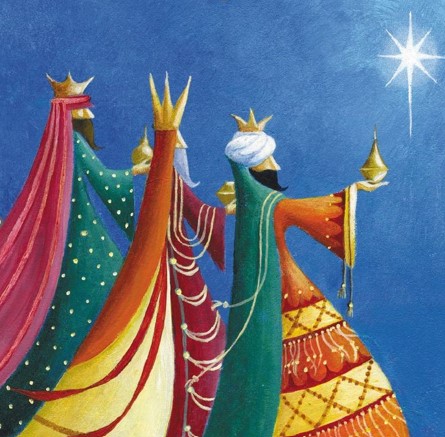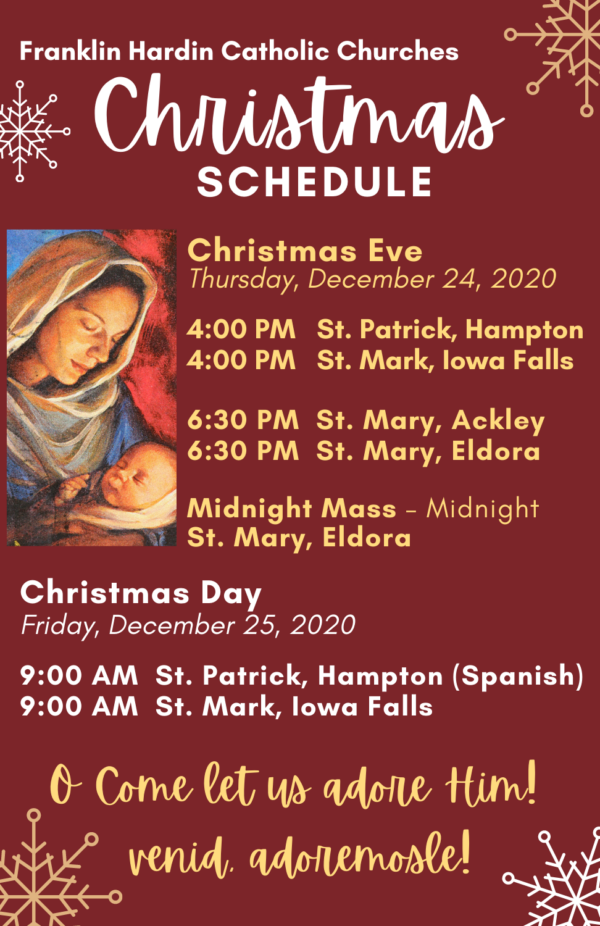Little is known about these magi from the East. Being “magi” we know they were well-educated scholars; and thus, likely from a royal family … hence sometimes called “Kings.” There are number of traditional stories about these magi which differ in details about who they were. The traditional story that made its way into Western Christianity (Roman Catholicism) is from the influential monk-historian, St. Bede the Venerable who wrote of three magi: “The magi were the ones who gave gifts to the Lord. The first is said to have been Melchior, an old man with white hair and a long beard … who offered gold to the Lord as to a king. The second, Caspar by name, young and beardless and ruddy complexioned … honored Him as God by his gift of incense, an oblation worthy of divinity. The third, black-skinned and heavily bearded, named Balthasar . . . by his gift of myrrh testified to the Son of Man who was to die.”
Another traditional story says that after they returned home, they renounced their high positions, gave all they had to the poor, and spread the Good News about the Christ Child. Forty years later St. Thomas the Apostle met them, baptized them, and ordained them priests. Finally, they were martyred for their Christian faith and were buried in Jerusalem; but eventually, these remains ended up at the Cathedral in Cologne Germany, where there exists a burial shrine in their honor.
The Catholic Church has a tradition of praying a special blessing of homes on the Feast of Epiphany. Over time this came to include a tradition of blessing the home by writing with chalk: 20+C+M+B+25, over one’s front doorway. The 2025 refers to the current year and the letters “C,M,B,” have the double meaning of referring to the names of the Three Kings, as well as referring to the Latin phrase: Christus mansionem benedicat (“May Christ bless this house”). The four crosses interspersed between symbolize the Four Gospels (Matthew, Mark, Luke and John), going out to the four corners of the world (North, South, East and West), to bless the entire world. There is even a traditional prayer of blessing of chalk by the priest for such an occasion.
In fact, if you are interested in blessed chalk, and a prayer you can pray in your home for such an occasion, reach out to me, Fr. Kevin, and I would be happy to make that available to you. And you can either pray that today or anytime this week!
Peace,
– Fr. Kevin
PS: I want to give a special word of thanks to everyone for all the kind Christmas cards and gifts: the food and treats; the gift cards, the money, the kind words, the prayers and everything else. I apologize that I may not get around to thanking you all individually, so this will have to suffice. But sincerely thank you all for your overwhelming kindness and generosity! And many blessings to you all this Christmas season!
5 de Enero, 2025 – Nosotros Tres Reyes, la Fiesta de la Epifanía
Poco se sabe sobre estos magos de Oriente. Siendo “magos”, sabemos que eran eruditos bien educados; y por lo tanto, probablemente de una familia real … de ahí que se llaman “Reyes”. Existen varias historias tradicionales sobre estos magos que difieren en detalles sobre quiénes eran. La historia tradicional que se abrió paso en el cristianismo occidental (catolicismo romano) es del influyente monje-historiador San Beda el Venerable, que escribió lo siguiente sobre los tres magos: “Los magos fueron quienes le ofrecieron regalos al Señor. El primero se conoció como Melchor, quien era más anciano y tenía cabellos canosos y barba blanca … obsequió el oro a Jesús. Este oro predecía el reconocimiento de Jesús como Rey. El segundo, el más joven de los Reyes Magos era Gaspar, tenía tez cobriza … lo honró como Dios con su ofrenda de incienso, una oblación digna de la divinidad. El tercero, Baltasar era de piel oscura y con barba, probablemente de origen árabe … por su don de mirra testificó del Hijo del Hombre que iba a morir”.
Otra historia tradicional dice que después de regresar a casa, renunciaron a sus altos cargos, entregaron todo lo que tenían a los pobres y difundieron la Buena Nueva del Niño Jesús. Cuarenta años después, el Apóstol Santo Tomás los conoció, los bautizó y les ordenó sacerdotes. Finalmente, fueron martirizados por su fe cristiana y enterrados en Jerusalén; pero finalmente, estos restos terminaron en la Catedral de Colonia, Alemania, donde existe un santuario funerario en su honor.
La Iglesia Católica tiene la tradición de rezar una bendición especial a los hogares en la Fiesta de la Epifanía. Con el tiempo, esto llegó a incluir la tradición de bendecir el hogar escribiendo con tiza: 20+C+M+B+25, sobre la puerta de entrada. El 2025 se refiere al año actual, y las letras “C,M,B”, tienen el doble sentido de referirse a los nombres de los Reyes Magos, además de referirse a la frase latina: Christus mansionem benedicat (“Que Cristo bendiga esta casa”). Las cuatro cruces intercaladas simbolizan los Cuatro Evangelios (Mateo, Marcos, Lucas y Juan), saliendo hacia los cuatro rincones del mundo (Norte, Sur, Este y Oeste), para bendecir al Mundo entero. Incluso, hay una oración tradicional en la que el sacerdote bendice la tiza para tal ocasión.
De hecho, si estás interesado en tiza bendita y en una oración que puedas rezar en tu hogar para tal ocasión, comunícate conmigo, Padre Kevin, que te lo haré disponible. Y puedes rezarlo hoy ¡o en cualquier momento de esta semana!
Paz
– Fr. Kevin
PD: Yo quiero agradecer especialmente a todos por todas las amables tarjetas y regalos de Navidad: la comida y golosinas, tarjetas de regalo, dinero, las amables palabras, oraciones, y todo lo demás. Pido disculpas por no poder agradecer a todos individualmente, por lo que esto deberá ser suficiente. ¡Pero gracias sinceramente a todos por su abrumadora amabilidad y generosidad! Y ¡muchas bendiciones para todos ustedes en esta temporada navideña!


